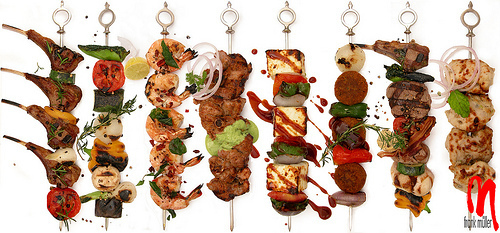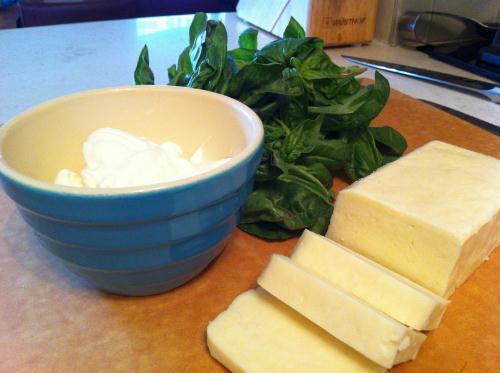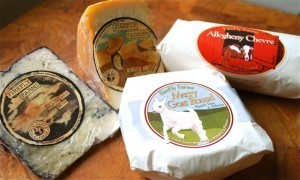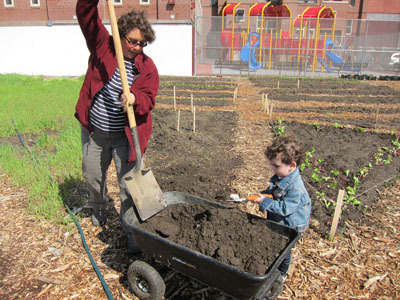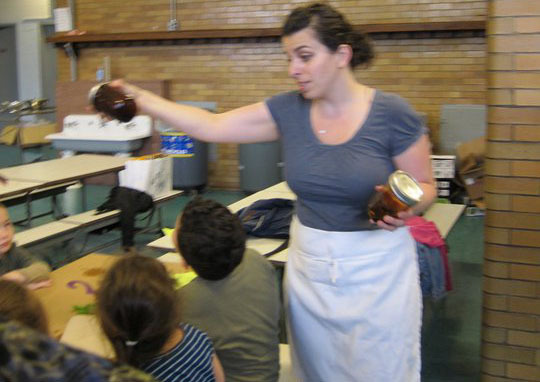Rachael Ray's Blog, page 92
June 18, 2012
A leaky toilet will cost you!
Recently I opened my water bill and it was up by almost $100 over the prior quarterly statement. In looking back over the year, this was by far the highest bill I have ever received. I called the water company and of course the first thing they asked is if I had a leaky toilet or one that “ran.” I said there wasn’t one, but in my mind I recalled that the bathroom my kids used sometimes would run, but I would jiggle the handle and it would correct itself right away. Despite my jiggling, I was still losing so much water that it cost me big time.
They also told me that you could have a “silent leak” where you don’t even know it’s happening. In that case, they said to add some coffee grounds to the tank and if over a few hours the water in the bowl turns brown, then you know it is leaking and needs to be fixed.
Usually the fix is easy, it is either the chain or the rubber stopper. In my case, the chain kept getting tangled so I replaced it and the stopper to be safe and it worked. This was better than having to pay another hundred dollars for a plumber to come fix something I could do myself.
Save water and your water bill by checking your toilets for leaks.
Won Ton Soup at Home
Won Ton Soup is one of those things that I crave and is on my list of top ten comfort foods. Who doesn’t love the slippery noodles and comforting chicken broth? Those little chewy pieces of pork with the red edges (why?) and the floating scallions? What I used to get in a Chinese restaurant was probably a fast food equivalent of the real thing, but I love this soup and so does my family so I decided to make my own version at home. I am not trying to claim to be an expert in cooking Chinese cuisine, but to make a knock off that resembles the restaurant version is okay by me for a quick fix and a quick weeknight meal, which can be made in under 30 minutes.
I decided to try a quick and healthy version so instead of stewing delicious and flavorful pork for the filling, I used ground turkey. In a bowl, I mixed ground turkey, grated ginger, diced scallions, minced garlic and some other flavorings like soy sauce and sesame oil as the filling and used store-bought won ton wrappers (look in the refrigerated section). My young daughter helped me make these so it turned into a fun project for the two of us and it was super easy for her to handle without my having to worry about her using a knife or any dangerous tools. Of course I had to keep making sure she washed her hands with hot, soapy water while working with the meat. While she did that, I sauteed some garlic, onions and ginger in a pot and added chicken stock once translucent, about 5 minutes later. Once the stock was simmering for a few minutes, I added the prepared dumplings and some additional scallions and let it simmer for about 10 minutes to make sure the filling was cooked all the way through. I would have added some greens if I had any handy but with just the scallions and won tons, this was a delicious soup, served with crispy noodles.
Here is the actual recipe, but feel free to tinker with it by adding leafy greens to the broth or various mushrooms or bamboo shoots, and have fun with Won Tons!
Won Ton Soup
Ingredients
1 tablespoon vegetable oil
1 tablespoon plus 1 teaspoon chopped garlic
2 tablespoons finely chopped fresh ginger
1/2 chopped white onion
1/4 cup thinly sliced scallions, plus 3 tablespoons finely chopped
10 cups chicken stock
1/2 pound ground turkey
1 egg yolk
2 teaspoons tamari or soy sauce
1 1/2 teaspoons white vinegar
1/2 teaspoon sesame oil
a pinch of crushed red pepper
Won Ton wrappers
Instructions:
In a large pot, heat the oil and add the garlic, ginger and onions for five minutes. Add the scallions and stock and let simmer for another 10 minutes. Meanwhile, assemble the won tons.
In a bowl, mix the garlic, ginger scallions, ground turkey, egg yolk, soy sauce, vinegar, sesame oil and crushed red pepper. Open the pack of Won Tons when ready to use. Using a teaspoon, place a dollop in the center of the Won Ton and brush the edges with water, then fold in half and seal shut. Once you have a bunch assembled, drop them gently into the simmering broth and let cook for about 5 minutes. Serve with Chinese crackers.
Rosemary Maggiore is our Last Minute Lady. A single mom of two kids plus a full time job (she runs this website!) keep her busy and usually pushing things to the last minute. Somehow she manages to keep her cool and her sanity while she enjoys good food, wine, friends and most importantly, family.
For more Ro, see:
Follow me on Twitter at @lastminutelady
June 17, 2012
Following My Beef Bliss, From Pasture to Plate: Part I
TO EAT eat a steak, and not think about the animal it came from, has been a lifelong project for me. I try not to think about what the animals go through, or how they die. I have simply ceded the debate to vegetarians, vegans, and animal-rights activists - frankly because I consider their arguments unanswerable. But the part that always got me was when, in their smarmy way, they asked if I had ever been to a slaughterhouse.
Well, now I have been to a slaughterhouse. I have more or less earned my right to eat beef unmolested. I have the seen the whole steer-to-steak process, from pasture to plate, and come out hungry at the end. Now, there is this very important qualification: I went to one of the newest, most humane, and least representative of American processing plants, the 7-year-old Creekstone facility in New Arkansas, Kansas. Creekstone, who is a major sponsor of Meatopia, brought me out to Kansas specifically so that I would say good things about what I saw there. But what I saw there was good. You can claim that it’s unrepresentative of the American meat industry, and I won’t argue. Had I gone to one of those vast and fetid complexes maintained by the agribusiness giants, I’m sure I would have been appalled. But then I couldn’t have taken them on a sponsor, and believe me a few of them have come calling.
Before getting to the processing plant, as it’s unpoetically called, a word about grass. You’ve heard much, no doubt, about the superiority of grass-fed meat to grain-fed meat. Most of the time it’s a ludicrous distinction; nearly all cattle eat grass for most of their lives. They are fattened up on some kind of grain mix in the last few months to give them the all-important marbling that separates good meat from bad. If, in the interest of a naturalistic ideology, or saving money, a producer sells beef that has only eaten grass, it’s likely to be lean and tough. But that’s not even the point. It wasn’t until I stood on that Kansan prairie and actually reached down to pull up the grass that I saw how misled I had been. This wasn’t the endlessly replicated blades of your lawn, nor the arid scrub of the pampas. This was a vast and intricate botantical garden, a whole ecosystem under my feet. In the space of a few inches could be found otherworldly flowering plants, weird succulents, dozens of plants that only looked like grass from afar. This crazy salad is what gives midwestern meat its characteristically herbaceous, complex character - tastes that are only brought out more when concentrated by long dry-aging. I, like the hungry fat bastard I am, focused entirely on the marbling, and the lush sweetness it added on at the end. Clearly I was missing the point.
Then it was time to follow the cattle to the slaughterhouse. And that experience deserves a post of its own. Stop back in a few days.
June 16, 2012
Father’s Day Breakfast Quickie: Spicy Poached Eggs Over Focaccia Croutons
This month is flying by and I cannot believe that Father’s Day is THIS Sunday! I’m in the middle of a move so everything is turned around. I haven’t had a chance to go out and get a gift for my husband but I did manage to buy cards a few weeks ago so all is not lost. I know gifts don’t really matter and that spending time with the ones you love is most important but I wish i would have had it a little more together this year.
Regardless of how crazy life is now, I decided to make my husband breakfast in bed for Father’s Day enlisting the help of our three and a half year old. I know he will appreciate sleeping in a bit because as most parents we never do and even if he has to listen to the craziness of our two boys while we make breakfast, at least he’ll be lying down while doing so. : ).
I didn’t want to do anything expected like pancakes, waffles or a frittata. Those options are all wonderful but I decided to make something a little more exciting for our favorite daddy. We are big poached egg fans in our house and I decided to make a version of poached eggs that is similar to one I recently had in a local restaurant. Instead of just serving poached eggs over toast, I’m serving mine over focaccia croutons and garnishing them with torn basil, spicy red pepper and a drizzle of extra virgin olive oil. This dish is seriously heaven on a plate.
If you are worried about making poached eggs, don’t be. They seem fancy but are crazy simple to make and once you learn the trick, you will be making poached eggs day and night. They are not only delicious for breakfast but also killer over creamy polenta or a lovely salad.
Happy Father’s Day to all!
Spicy Poached Eggs Over Focaccia Croutons
Serves one
Ingredients:
1 slice of focaccia bread, about 1-inch in thickness.
1 teaspoon white vinegar
2 eggs
1/2 teaspoon red pepper flakes
1/4 teaspoon salt
1 tablespoon extra virgin olive oil
1/4 cup basil, torn
Instructions:
1. Toast focaccia in a toaster and cut into 1 inch cubes. Place cubes into a bowl and set aside.
2. In a high sided skillet, heat about 3 inches of water until it just begins to bubble (little bubbles, not a rolling boil). Stir in 1 teaspoon of vinegar. Crack one of the eggs into a small bowl or ramekin. Gently pour the egg into the water, then repeat with the next egg.
3. Cook eggs, without moving until the white begins to set, about 3-4 minutes. Use a rubber spatula to gently loosen the egg from the bottom of the pan if it sticks. Use a slotted spoon to remove each egg from the water and drain well. Gently place eggs onto focaccia croutons and top with red pepper flakes, olive oil and basil leaves. Serve immediately.
Christina Stanley-Salerno is a mama, recipe developer, food stylist, photographer and blogger atTakeBackYourTable.com. She loves cooking for and with her family. Life is hectic, but Christina is passionate about mealtime because she believes that family meals are the glue that holds everyone together. Creating simple, quick and healthy meals is her specialty and her trick to keeping the family meal a reality, even on busy weeknights.
Follow her on Twitter @TakeBackTables
June 13, 2012
S’mores Ten Ways
School’s out which means it’s summer time, the official season of s’mores. We had a bonfire in our little fire pit on Sunday night to kick off the season - the first of many this summer I’m sure. My kids, like most, go crazy for s’mores and I have blogged about s’mores in the microwave, baked s’more bars, s’more cupcakes, and s’more brownies. These all feature the traditional graham cracker, milk chocolate, marshmallow combination, which is a classic for a reason. But why limit yourself - the possibilities when it comes to s’mores are endless; I think this summer we will try and think out of the box a bit with some of these s’more combos:
Chocolate graham cracker+peanut butter+marshmallow+ chocolate = Reese’s s’more
Graham cracker+ peanut butter+ jelly+marshmallow = PB&J
Chocolate graham cracker+ marshmallow+ rice crispies+chocolate = Rice crispie treat s’more
Graham cracker+peanut butter+banana+ marshmallow = the Elvis s’more
Oatmeal cookie+marshmallow+ chocolate = Moonpie s’more
Chocolate chip cookie+marshmallow+ chocolate = Tollhouse s’more
Chocolate graham cracker+marshmallow+peanut butter cup = PB cup s’more
Chocolate graham cracker+marshmallow+white chocolate = Oreo s’more
Graham cracker+marshmallow+Nutella = Nutella s’more
Chocolate graham cracker+caramel sauce+marshmallows+chopped pecans+ chocolate=Turtle s’more
Set out s’more fixings at your next barbecue and let your guests come up with their own combinations. Did I miss any of your favorites? Let me know! Happy s’mores!
June 12, 2012
Summer Sizzler – Basil Paneer On The Barbeque
Another hot weekend in New York and there is barbeque in the air. Grilled meats and vegetables accompanied by crunchy and hydrating salads provide for the perfect summer evening meals. This weekend, rather than cooking some dishes on the grill and some on the stove, I reserved all the action for one area: The Barbeque.
The barbeque is an interesting place to cross boundaries with cuisines and they all come together symphonically with their smoky and heady aroma. We threw down barbeque ‘lifers’ – burgers, Lebanese skewered chicken ‘shish taouk’ that were thread with a sequence of bell peppers and onions and marinated chunks of spicy and creamy Paneer slabs.
Like halloumi, paneer makes for a perfect grilling ingredient. It yields its softer side in the presence of heat but only very slightly. Distinct from most other cheese, paneer does not melt and this is why it can hold its own amongst more sturdy barbeque items like steak, chicken and firm fish. It also changes up the otherwise ‘fleshy’ textures that are commonly experienced with barbeques with its mildly sweet and tart flavor and close-knit texture.
Whilst I am a big fan of homemade paneer as it’s texture is similar to that of feta, I like to use the store bought version for grilling. Packaged paneer is a lot firmer and you don’t have to worry about it crumbling on the grill. It’s light flavor makes it a great ingredient to take on other flavors, however, the marinade, should not be too loose or it will not stick to the paneer. I like to use thick yoghurt or sour cream and at times a touch of flour so that the pieces remain coated with the marinade when they are on the grill.
For today’s barbeque paneer, I have some wonderful market basil which works like a charm in the presence of dairy. Cubes of paneer that have been bathed in a marinade of creamy and peppery basil and grilled with speckles of charring add the brightest of flavor to any barbeque.
Ingredients
1 packet of Paneer (available at your local ethnic store), cut into ¼ “rectangles
1 cup of fresh basil
1 green chili, deseeded (optional)
1 cup of sour cream
Juice of ½ a lemon
Salt and pepper
Method
1) Heat the barbeque or if cooking in the broiler, set the oven to ‘high’
2) Blend all the marinade ingredients except for the paneer until nice and smooth
3) Coat the paneer pieces in the marinate and set aside for 10 minutes
4) Once grill/ broiler are hot, grease the surface area where the paneer will be cooked and lay the pieces down until they begin to bubble at the surface and turn brown in some areas
5) Remove from heat and serve immediately
* The paneer must be eaten immediately as it begins to seize and dry up as it cools down
Saira Malhotra is a classically trained French chef and graduate from the French Culinary Institute. A British born Punjabi, Saira has grown up around food which started from her family pizza business in a small suburb of London. Having studied in France and Italy and living in the Big Apple for the past 12 years, Saira has brought her European, Asian and American influences together via the palate and communicated through her food blog ‘Passport Pantry’.
June 11, 2012
How To- Vintage Silhouettes
Silhouette portraits were popular in the mid-18th century and continued to be through the early decades of the 19th century. Traditionally, profile portraits were cut from black paper. To make things a little easier, the technique described here uses ink and brushes, but could be done with black paper and a precision knife following the same steps.
Take a profile photo of the subject. For best results, have the subject stand against a plain wall or curtain. Flip the photo horizontally before printing. Then trace the outline using tracing paper and a pencil.
Flip the tracing paper over and retrace the outline onto the desired paper; the pencil on tracing paper acts like carbon paper. I couldn’t decide whether to use a rustic looking brown paper, or a fancier paper, so I traced the image onto both.
If you are cutting your silhouette instead of painting, trace the image onto black paper or card stock, and then cut using a precision knife or fine utility knife.
If you are painting your silhouette, use a fine brush and black ink, like india ink, to fill in the image.
I searched high and low for some oval, fancy frames to frame my portraits, but I couldn’t find any at an affordable price, so I opted to use the fancy paper with a plain black frame. The portraits were going to be snug in my frames, so I flipped the frame over and traced the opening to make sure the portrait didn’t get cut off.
Because I needed the paper to be a little larger than the frame opening in order to fit the frame properly, I used the glass as a template so I could cut the paper to the proper size.
Then, I erased the inside, frame opening line because I didn’t want to see it once the portrait was framed.
Cut the paper to size.
Before reassembling the frame, clean the glass and stack everything—the backing, the portrait and glass—to make sure all the dust and eraser bits have been removed. Once everything looks clean, reassemble the frame.
Hang in a favorite spot for an old fashioned look. These portraits make great wedding gifts or birthday presents. Just don’t let the subject know what you’re doing when taking the initial photo, so it will be a surprise.
Find me on Facebook!
For The Lactose Intolerant, and Those Who Love Cheese, Look to Goats
I recently got a sample of different goat cheeses from Firefly Farms in Maryland, a small farm that produces award-winning handcrafted cheeses. To my surprise, I’m struck by how much they taste just like cow cheese, except with a cleaner flavor and a lighter feel.
From the sweet, moist chèvre to the rich, salty blue cheese to the decadent, soft-ripened round, these cheeses have none of the grassiness that goat cheese is sometimes known for.
There’s been more interest in goat cheese recently because of the many people with lactose intolerance who can’t digest the fat molecules in cow dairy. Goat cheese, goat milk, and goat yogurt can be good options for the lactose intolerant, as the fat molecules in goat dairy are relatively small, making it easier to digest. Interestingly, the growth hormones that are routinely injected into cows have never been developed for goats, so all goat dairy is hormone-free. It’s supposedly higher in calcium and B vitamins than cow dairy, too.
As for the taste, goat cheese has a refreshing flavor that’s tangier than cow cheese and less sweet. Despite its creamy texture, it reportedly has fewer calories than regular cheese. After eating a few pieces of each of the various cheeses, I don’t have that sluggish feeling that usually comes over me when I indulge.
Look for goat cheese at natural food stores, and definitely at farmer’s markets. There are lots of small goat farms around the country that produce high quality dairy and sell their products locally.
Here are some no-fuss ideas for how to use chèvre style the goat cheese:
Crumble it onto salad
Spread it on grilled vegetables
Break it into pieces and cook in omelets or frittatas
Crumble it over berries with a little lemon zest and honey
Blend it with melted chocolate or pureed fruit, and honey or sugar, and freeze into popsicles
Louisa Shafia is a cook with a passion for healthy eating. She recently penned Lucid Food: Cooking for an Eco-Conscious Life, a collection of seasonal recipes and eco-friendly advice on food. To watch her cooking videos, see her recipes, and find out about her cooking classes, go to lucidfood.com.
On Cooking With Kids, The Edible Schoolyard And One Tasty Open Faced Avocado Sandwich
Back when I started writing recipes as a career, my goal was to always develop recipes with the family in mind. I started my blog TakeBackYourTable.com as a way to reach people on a larger scale, using my culinary skills to offer up easy, healthy recipes to families everywhere. Growing up Italian-American, food and family went hand-in-hand. The family meal means everything and after I had my own children, my passion for it solidified. Each day I get to see first hand just how meaningful it is to teach children the importance of food and nutrition at an early age. The old proverb “Give a man a fish and you feed him for a day; teach a man to fish and you feed him for a lifetime.” always rings in my head whenever I have my babies by my side in the kitchen. It’s so true! Although my kids are only one and three years old, I know that the moments they spend with us in the kitchen and around the dinner table are invaluable both physically and emotionally.
Teaching kids about food, where it comes from and how it’s prepared is less about making them into little foodies and more about giving them the tools to help them sustain a healthy lifestyle. Getting them involved in the kitchen teaches them to be confident and self-sufficient (among many other things) and those are powerful traits to have. In a time where our kids are surrounded by fast food, poor school provided lunches and childhood obesity is at an all time high, it has never been more important to arm them with the tools they’ll need to lead healthy lives and that all starts in the kitchen.
My passion for family and food lead me to my work with the Edible Schoolyard of New York—the first Edible Schoolyard on the east coast and the first ever, four season one at that! If you aren’t familiar with the program, it’s creation of Chef Alice Waters that started over 16 years ago in Berkley California. Their mission is simple: “ to create and sustain an organic garden and landscape that is wholly integrated into the school’s curriculum, culture, and food program. ESY involves students in all aspects of farming the garden and preparing, serving, and eating food as a means of awakening their senses and encouraging awareness and appreciation of the trans-formative values of nourishment, community, and stewardship of the land.”
Before 2010, there was no Edible Schoolyard on the east coast. Lucky for me the first east coast school to receive an Edible Schoolyard was P.S. 216 in Brooklyn, my alma mater! I worked with Director Christiane Baker and her amazing team to start the first ever PS 216 Family Nights. They understood my attachment to the school and my love for the program and were extremely encouraging and welcoming. Christiane and her team are everything you would want surrounding your children, kind, inspiring, encouraging and passionate, a true testament to exactly how special the program is.
Our goal with Family Night was to give the families of PS 216 a better sense of the program and what it entailed. As parents, we all know how hard it is to get an answer to “what did you do in school today?” from our kids so i wanted to show them first hand what their kids were doing. During these events, they were given the opportunity to explore the garden, meet the staff, get a greater sense of the program and it’s amazing facilities. Beyond checking out the garden, parents, caregivers and students were given the opportunity to participate in small cooking classes that I conducted using in-season ingredients fresh from the garden to create delicious recipes like this Opened Face Avocado and Cheddar Sandwich and a leafy green salad with homemade vinaigrette. At the end of each event, everyone sits down together to enjoy the fruit of their labor. It’s wonderful to see children so eager to try what they made, even if they have never tried it before—confirmation that getting your kids involved in the growing and preparation of their food will make them healthier eaters.
According to the ESYNYC website, plans are in effect to establish five showcase schools, one in each borough of New York City. Their goal is to provide New York City’s one million public school students with access to an Edible Education. If you live in or around the NYC area, find out how you can volunteer with the program. Check out the ESYNYC website for community events and open garden hours when you and your family can get your hands dirty and learn something while you work in the garden. If you don’t live in the NYC area, get in contact with your local community to see if there are similar programs available. It will truly be an experience you and your family will never forget.
Avocado, Radish and Pea Shoot Open faced Sandwich
Serves 4
Ingredients:
4 slices of hearty whole-grain bread
1 ripe avocado
4 slices of cheddar cheese
4 radishes, thinly sliced
1 cup pea shoots
salt and pepper, to taste
½ lemon
Preparation:
Cut avocado in half and remove the pit. Scoop out avocado flesh and place into a small bowl. Mash avocado with a fork until it’s a spreadable consistency, season with salt and pepper.
Lay bread onto a flat surface. Spread avocado evenly over the slices of bread. Layer on cheddar, radishes and sprinkle with pea shoots. Season sandwiches with additional salt and pepper (if desired) and a squeeze of lemon.
June 7, 2012
Adam Perry Lang’s Radical Reinvention of Grilling Freaks Me Out!
The man I have called my own personal meat guru, Adam Perry Lang, has a new book out, Charred and Scruffed. It’s a revelation to me, and I don’t think the grilling community has really begun to cope with just how radical its approach is. I used some of its signature techniques on some dry-aged steaks the other day, and you can see from the picture how well they turned out. But before getting into what I did, I want to underscore why I think Adam is a genius, and why everything he says seems so completely and profoundly wrong.
As a meat cook, the essence of your art is restraint. Remember how Bruce Lee in Enter The Dragon spoke about “the art of fighting without fighting?” That is how you learn to cook. A great meat cook doesn’t overseason, he doesn’t overmanipulate or patchke with the meat, he in fact is trained to do as little as possible to it. That’s why things like roast chicken, that more or less cook themselves, are in so many ways the paradigm of great meat cookery. But Adam was always aggressive, bold, and a hands-on cook. The first time I ever saw him cook, he made a pork chop, arrosezing it with foaming butter in a tilted pan. And his grilling style has grown ever more aggressive. In his new book, he calls for cooks to beat up the meat, move it constantly around, take it off and on the heat, squeeze it, put it right on the coals, and half a dozen other things far beyond what any conventional outdoor cookery, even decorated competition veterans, would suggest. He is a visionary and I love him for it. But I was frankly nervous about trying his techniques.
There were four of them that I applied to this steak. I’ll go through them one by one.
“Hot Potato” Movement. Of all of Adam’s techniques, this is the one that makes me the most nervous. By constantly turning and moving and flipping the steak, he feels that you are getting an even cook. I feel that you are keeping the meat from getting as brown as it ought to be. Moreover, with the kind of fatty dry-aged steaks that I favor, you are getting flare-ups such as you might expect to find on the surface of the sun. To be frank, I’m still not sold on this one. That said, the meat had an admirable brownness overall and and even cook throughout.
Scuffing. Adam doesn’t want a flat surface on his steaks and chops; he likes them ripped up, “scuffed,” and even in some cases cut crossways in the style of ham rinds. The idea is that by cutting up the meat you are exposing more of its surface not just to the aromatizing power of the coals, but also allowing more fat to render out (and flare up, which Adam likes as much as I do.) The scars and channels of the meat don’t just sit there: Adam bathes them with butter and garlic and herbs and other good things, constantly bathing them as he flips and flops them on the fire. I told you, this is a very elaborate system.
Tempering. This was one that frankly surprised me. Everyone in the world seems to agree that meat should be rested after cooking - except Adam Perry Lang, who cuts it up right out of the broiler, and tells his cooks to do the same. But in Charred and Scuffed, he advises “tempering” the meat by taking it off heat, letting it settle and seethe, cooling down on the board before a final sizzle at the end to give extra Maillard-reaction (aka “caramelisation”) flavor.
Board-Dressing. After the steak is all done, it gets get up and mixed with a “board dressing,” a vivid cocktail of olive oil, parsley, steak juice, garlic, and whatever else you feel like mixing into it. All the slices are coated with it, thus solving the primary challenge of all meat cookery, which is: how can you flavor the inside of the meat (which is to say, most of it), and not just the outside part. The final tangle of glistening, firm, crusty-but-not-blackened strips of steak were perfectly coated, and practically jumped onto your palate. The only downside was that I was cooking on a cool night, and the cold board dressing over-cooled the already-tempered meat, making it less than hot when I served it to my waiting mouths downstairs. But given that I was experimenting with four totally new techniques, that doesn’t seem too bad a price. Just look at that picture.
Rachael Ray's Blog
- Rachael Ray's profile
- 296 followers




